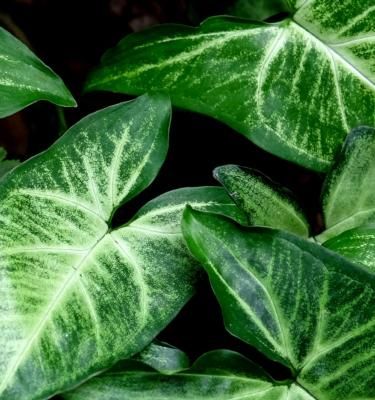

How to grow & care for Syngonium
Syngonium or Arrowhead Vine (Syngonium podophyllum) are a brilliant indoor plant for beginners to grow. Initially they seem like a compact plant with leaves that look a lot like arrowheads, but in their wild habits they prefer to climb - so you can also provide them with a totem or support to climb up as they grow. If their growth gets too unruly, they happily tolerate a prune to keep them in check.
Syngonium prefer a medium to bright spot with indirect sunlight which can burn their leaves. They’ll tolerate average household humidity, but will really thrive if you can put them in a naturally humid spot (like a bathroom or kitchen) or group them with other plants to create a small humid microclimate.
There’s a big range of leaf colour amongst Syngonium varieties - you’ll find them with leaves in dark green, lime green, green/white variegated and even pink/green variegated.
Top 5 steps to growing syngonium
- Syngonium prefer a spot with medium to bright indirect light - direct sun can burn their leaves. They will also tolerate low-light conditions, but their growth won’t be as fast.
- Use a premium, like Scotts Osmocote Premium Potting Mix for Indoor Plants to give your plant the best start possible
- Syngonium like to climb, if you notice your plant starting to flop over as it grows - add a moss totem for it to climb
- Fertilise Syngonium with an indoor plant fertiliser like Scotts Osmocote Pour+Feed for Indoor Plants during spring and summer, to encourage strong healthy growth.
- Use a hose or shower to gently wash away any dust from their leaves from time to time
Shopping List
- A Syngonium plant
- A suitable pot
- Scotts Osmocote Premium Potting Mix for Indoor Plants
- Scotts Osmocote Controlled Release Fertiliser for Indoor Plants or Scotts Osmocote Pour+Feed for Indoor Plants
- A potting mix scoop
- Defender Pyrethrum Insect Spray
Growing in a pot
Choose a pot for your Syngonium that’s roughly 2 times the size of the original nursery pot - make sure it has drainage holes or use a black plastic pot that sits snuggly inside a cover-pot or cache pot (pot with no holes).
Half fill your pot with Scotts Osmocote Premium Potting Mix for Indoor Plants and gently remove the Syngonium from the nursery pot and position it into the potting mix, backfill around the root ball with more potting mix so that the potting mix is level with or slightly below the top of the pot.
Water your new Syngonium in well and tip out any excess water from the base of the coverpot or saucer (if using). Syngonium prefer to dry out between waterings, make sure the top 5-10cm of soil is dry before watering again.
Fertilising & Care
Fertilise Syngonium fortnightly in spring and summer with an indoor plant fertiliser to encourage new growth. Use Scotts Osmocote Pour+Feed for Indoor Plants - this is a simple to use ‘measure and pour’ feed which contains the right balance of nutrients. If you’d prefer a longer term fertilising product, with less applications apply Scotts Osmocote Controlled Release Fertiliser for Indoor Plants - this product feeds for up to 6 months.
In the warmer months of spring and summer Syngoniums will appreciate a more regular watering, but only when the top 5cm of potting mix is dry. In winter time when they are not actively growing, you can ease off on the watering.
Remove any dead or damaged leaves to promote new growth. If any branches or stems become too long and leggy, cut them back to encourage bushy growth.
WARNING - Syngonium are poisonous if eaten - keep them away from pets and children.
Propagating
Syngonium propagates easily from cuttings - take a stem cutting that includes some nodes (they’ll look like bumps on the stem) and place the cut end in a glass of water. Within a few weeks it should have sprouted roots and be ready to pot up into a clean pot filled with Scotts Osmocote Premium Potting Mix for Indoor Plants.
Pests & Diseases
Look out for distorted new growth and obvious signs of pests on the undersides of leaves. Aphids and mealybugs can from time to time become a problem on Syngonium - use Defender Pyrethrum Insect Spray to control them if needed.



